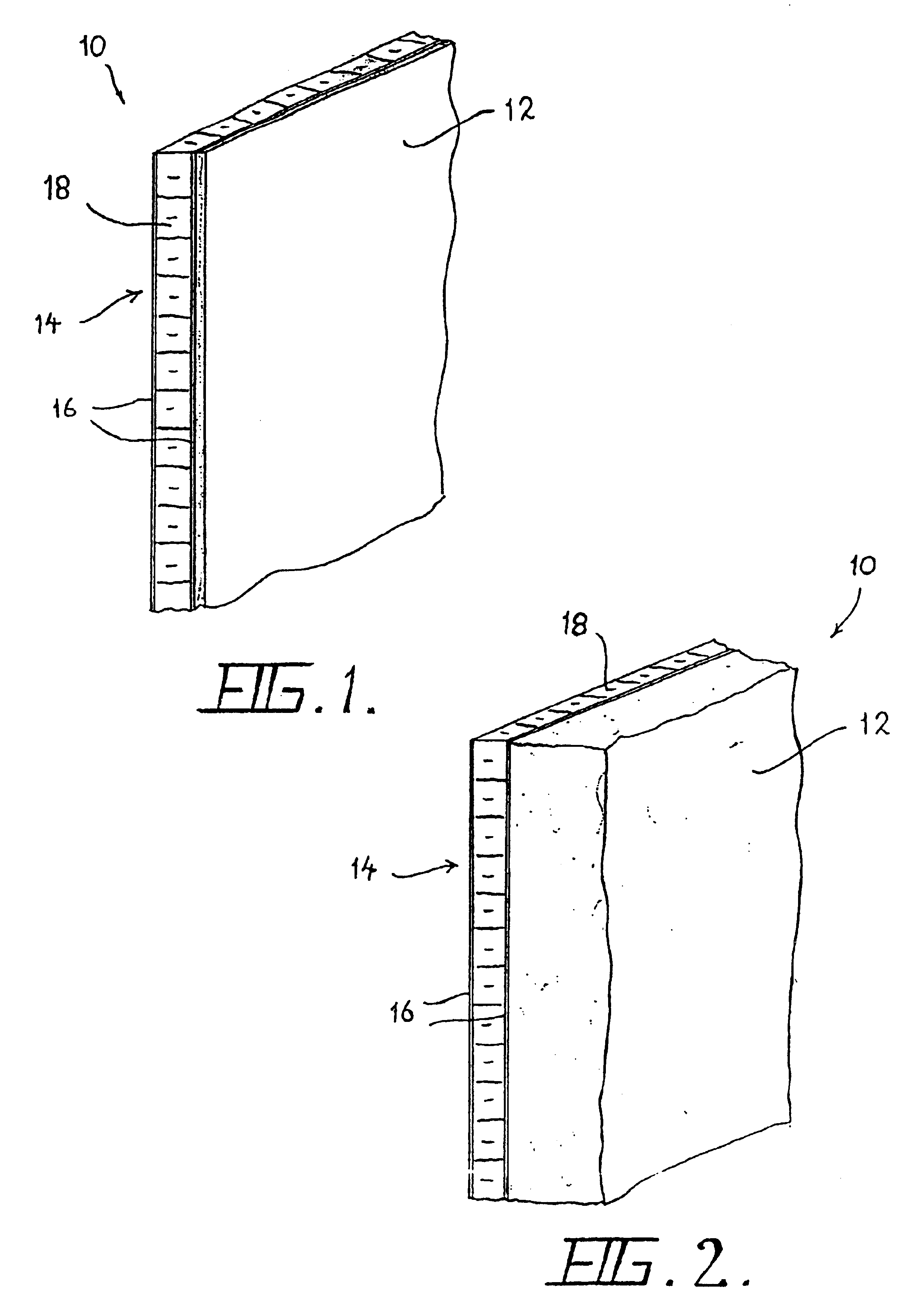Fire barrier panel
a technology of fire barrier and panel, applied in the field of fire barrier panel, can solve the problems of aluminium structure exposure, insulation system, and significant loss of aluminium strength
- Summary
- Abstract
- Description
- Claims
- Application Information
AI Technical Summary
Benefits of technology
Problems solved by technology
Method used
Image
Examples
Embodiment Construction
A preferred embodiment of the fire barrier panel 10 of this invention as illustrated in FIG. 1 comprises a relatively thin layer 12 of an inorganic intumescent material. In this embodiment the intumescent material 12 is a mixture of thermally activated exfoliating graphite and mineral fibres with an acrylic binder that forms a felt layer. In excessive temperature conditions (>190° C.) the graphite expands considerably in volume to produce a thick insulating layer of mineral fibres. A suitable intumescent material is the Tecnofire.
Intumescents manufactured by Technical Fibre Products Limited and sold under the trade mark Tecnofire. Tecnofire mats are sold in a range of densities with various expansion volume and pressure characteristics.
In an alternative embodiment the intumescent material 12 is an expanding felt formed from a mixture of alkaline earth silicate fibres together with a small quantity of organic binder and a special additive which produces an immediate expansion in thic...
PUM
| Property | Measurement | Unit |
|---|---|---|
| thick | aaaaa | aaaaa |
| thick | aaaaa | aaaaa |
| thickness | aaaaa | aaaaa |
Abstract
Description
Claims
Application Information
 Login to View More
Login to View More - R&D
- Intellectual Property
- Life Sciences
- Materials
- Tech Scout
- Unparalleled Data Quality
- Higher Quality Content
- 60% Fewer Hallucinations
Browse by: Latest US Patents, China's latest patents, Technical Efficacy Thesaurus, Application Domain, Technology Topic, Popular Technical Reports.
© 2025 PatSnap. All rights reserved.Legal|Privacy policy|Modern Slavery Act Transparency Statement|Sitemap|About US| Contact US: help@patsnap.com


